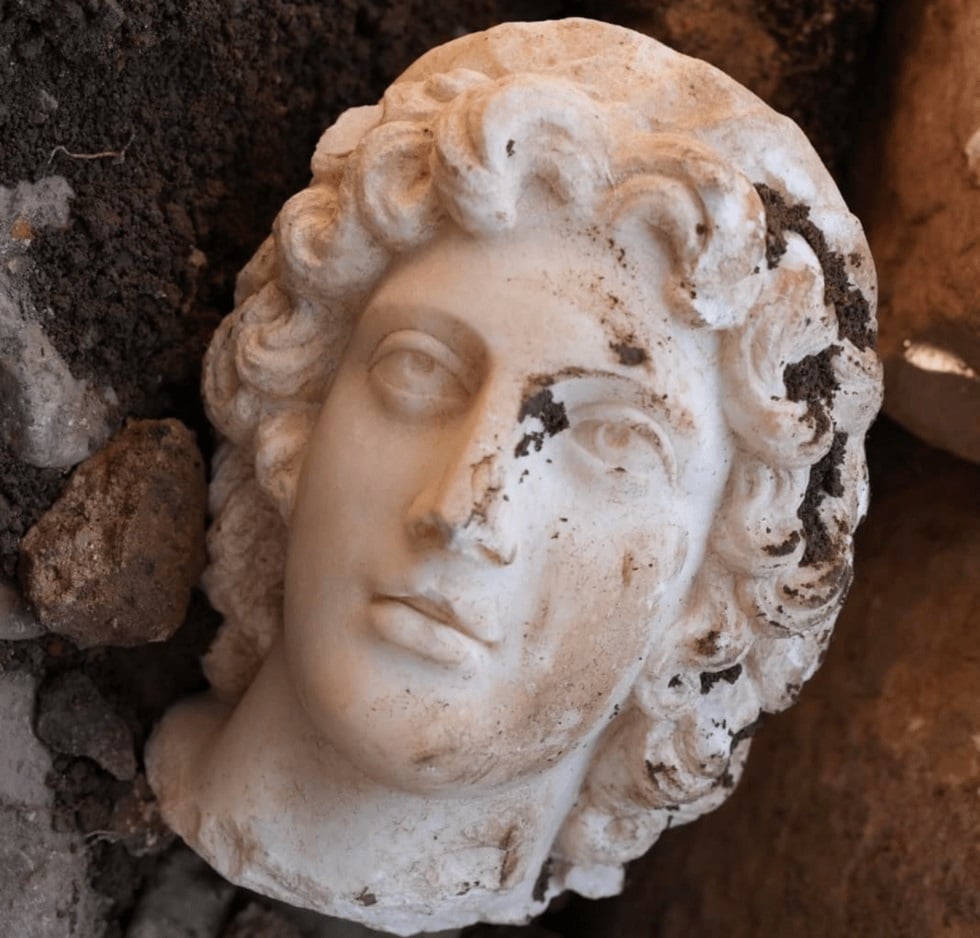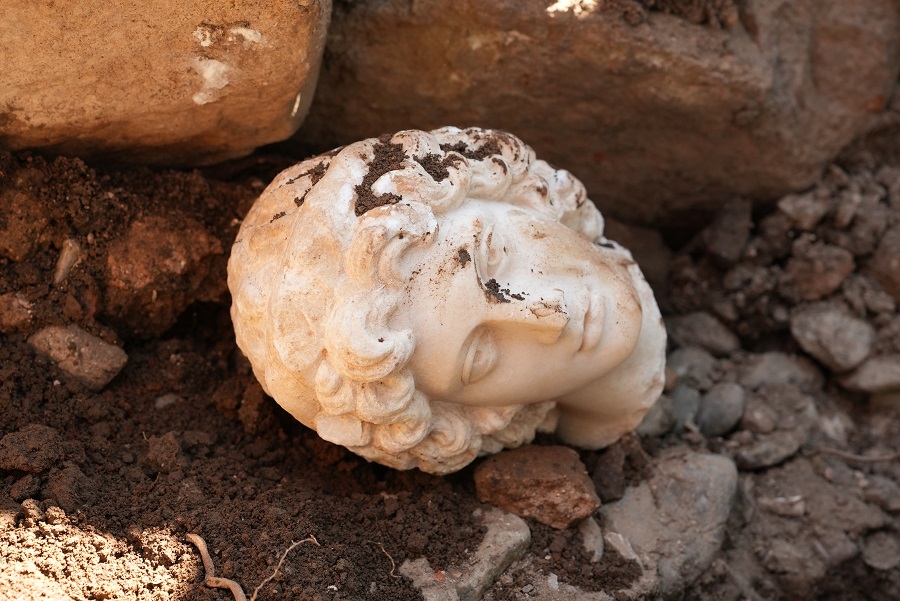
The head of a statue determined by archaeologists to belong to Alexander the Great, was unearthed during excavations in north-western Turkey.
The marble head, dated to the 2nd century AD, was found at the top of a theater in the ancient city of Konuralp, near modern-day Düzce.
While most parts of the ancient theater have been unearthed during the excavations, similar historical remains such as the head of the Apollo statue and the head of Medusa were previously found in the upper part of the structure.
During the excavations carried out in the Konuralp Ancient Theater excavation area, archaeologists identified an artifact in the ground at the top of the theater area. As they kept digging, they removed the artifact, which appeared to be the head of a bust.
As a result of the consultation of history experts, it was determined that the bust head found belonged to the Macedonian King Alexander the Great.
In a statement, Konuralp Museum provided information about why they determined the bust to belong to Alexander the Great.

“The head, measuring 23 centimeters [from head to neck] was found during the excavations in the ancient theater. It is depicted with deep and upward-looking eyes made of marble, drill marks on the pupil and a slightly open mouth that does not show much of its teeth.
“His long curly hairstyle up to his neck and two strands of hair [Anastoli] in the middle of his forehead are like the mane of a lion. This depiction is a hair type typical of Alexander the Great,” the statement said.
The marble head of Alexander the Great delivered to Konuralp Museum
Historical Konuralp is 8 km north of Düzce; first settlements there go back to 3rd century BC. Until 74 BC, it was one of the most important cities belonging to Bithynia, which included Bilecik, Bolu, Sakarya, Kocaeli.
It was conquered by Pontus and then by the Roman Empire. During the Roman period, the city was influenced by Latin culture, and it changed its name to Prusias ad Hypium. Later on Christianity affected the city and after the separation of the Roman Empire in 395, it was controlled by the Eastern Roman Empire (the later Byzantine Empire).
In 1204, the Crusader armies invaded Constantinople, establishing the Latin Empire. Düzce and its surroundings are thought to be under the dominance of the Latin Empire during this period. Düzce was under Byzantine rule again from 1261 to 1323.
The Konuralp Museum has some rare exhibits. A 1st-century sarcophagus, Orpheus mosaic, the mosaic of Achilles and Thetis and the 2nd-century copy of Tyche and Plutus sculpture are among the notable items in the museum. There are 456 ethnographic items.
In the ethnography section clothes, weapons, and daily-usage articles about the late Ottoman era are exhibited. There are also 3837 coins from Hellenistic to Ottoman era.